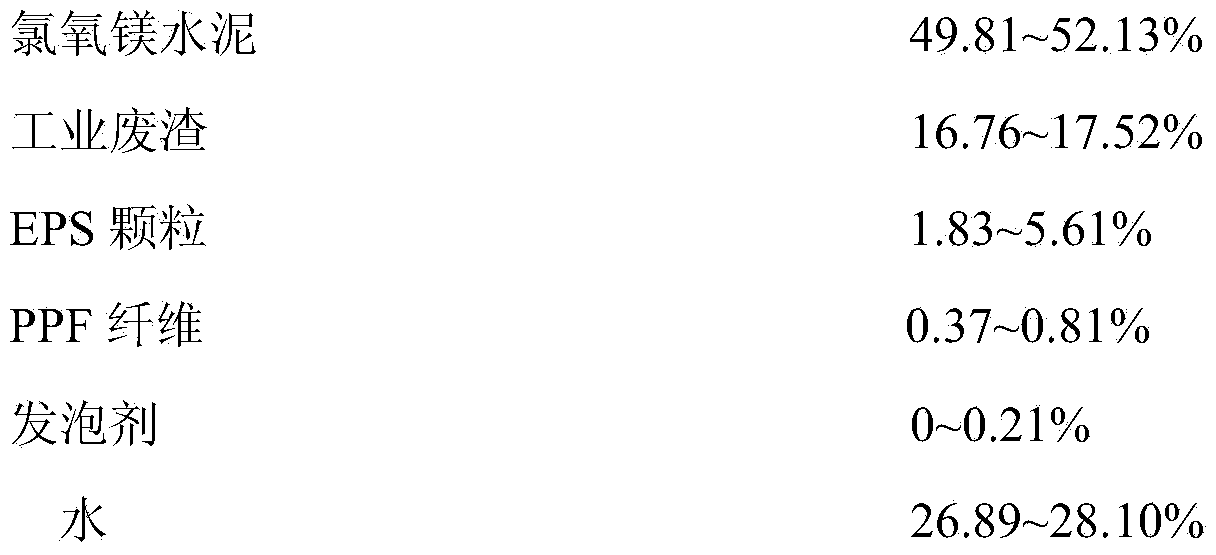Styrene foam particle-magnesium oxychloride cement composite heat insulation material and preparation method thereof
A composite thermal insulation material and magnesium oxychloride cement technology are applied in the field of organic-inorganic composite thermal insulation materials, and can solve the problems of occupying land resources, ineffective treatment of industrial waste residues, and environmental pollution.
- Summary
- Abstract
- Description
- Claims
- Application Information
AI Technical Summary
Problems solved by technology
Method used
Image
Examples
Embodiment 1
[0026]
[0027]
[0028] Its performance is measured as follows:
[0029] Dry density is 240kg / m 3 , the compressive strength is 0.40MPa, and the thermal conductivity is 0.064W / (m·K).
Embodiment 2
[0031]
[0032] Its performance is measured as follows:
[0033] The dry density is 312kg / m 3 , the compressive strength is 0.8MPa, and the thermal conductivity is 0.087W / (m·K).
Embodiment 3
[0035]
[0036] Its performance is measured as follows:
[0037] Dry density is 215kg / m 3 , the compressive strength is 0.33MPa, and the thermal conductivity is 0.062W / (m·K).
PUM
| Property | Measurement | Unit |
|---|---|---|
| density | aaaaa | aaaaa |
| density | aaaaa | aaaaa |
| compressive strength | aaaaa | aaaaa |
Abstract
Description
Claims
Application Information
 Login to View More
Login to View More - R&D
- Intellectual Property
- Life Sciences
- Materials
- Tech Scout
- Unparalleled Data Quality
- Higher Quality Content
- 60% Fewer Hallucinations
Browse by: Latest US Patents, China's latest patents, Technical Efficacy Thesaurus, Application Domain, Technology Topic, Popular Technical Reports.
© 2025 PatSnap. All rights reserved.Legal|Privacy policy|Modern Slavery Act Transparency Statement|Sitemap|About US| Contact US: help@patsnap.com



